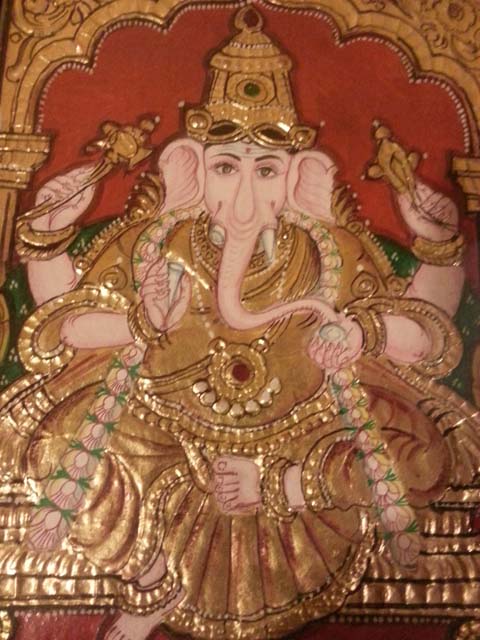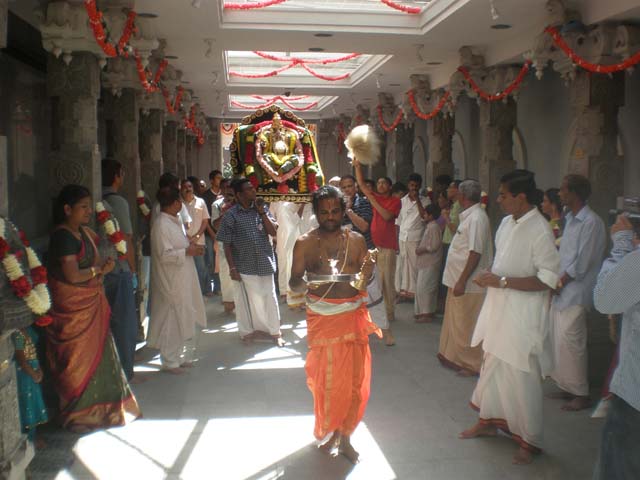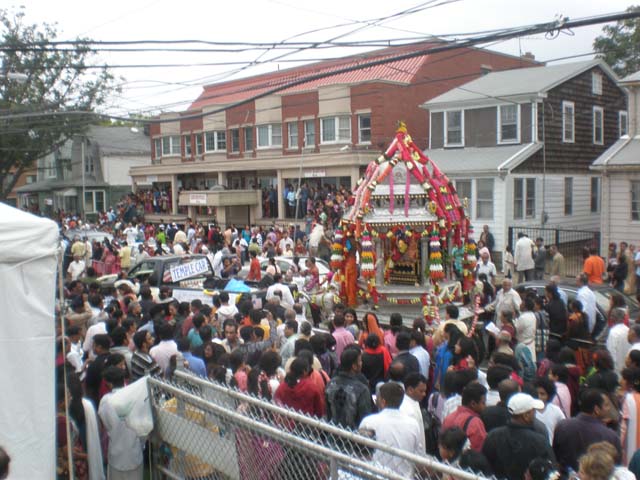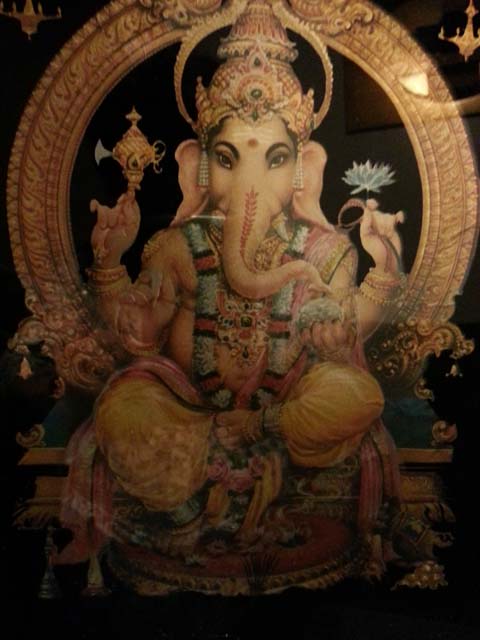
Connecting with the God of Auspicious Beginnings
The most beloved god in the Hindu pantheon is surely Ganesha, the son of Shiva and Parvati. He is the God of Auspicious Beginnings, the one whose presence assures the success of any venture. Whether it is the birth of a child, the opening of a new business or even the buying of a new car, nothing begins without the blessings of the Elephant-headed God. He is beloved by students too because a prayer to Him ensures better grades in an exam.
In ‘Eternal Ganesha’, a book devoted to this special deity, Gita Mehta writers, “He is regarded as the Origin of the Universe, the Lord of Connection, of Cause and Effect, the Moment of Creation. He’s really a metaphor for a philosophical quest, an eternal search.”
So it is no surprise that Lord Ganesha’s birthday is a time for great joy and celebration. Ganesh Chaturthi is the 9 day festival celebrating the birth of this joyful deity and is one of the most colorful Hindu festivals. This year the festival is celebrated from September 11 to 20th.
Ganesha Chronicles – Everything You Wanted to Know about Ganesh Chaturthi
In India, after rituals, chanting and prayers, thousands of clay images of Ganesha are taken out in joyous processions in the streets before being immersed in the ocean in a rite called Visarjna. Now even in the US, in many cities, the images of Ganesha are finally immersed in bodies of water.

Ganesh Chaturthi at the Hindu Temple Society of North America
The Sri Maha Vallabha Ganapati Devasthanam, also known as the Hindu Temple Society of North America, in Flushing, New York, is the oldest temple in America and one of the prime places to celebrate Ganesh Chaturthi. According to the temple literature, “One of the main purposes of this celebration is to give an extra boost of divine šakti (energy) to the main vigraha of Šri Mahã Vallabha Ganapati. This is done mainly through japa (repetitive chanting of a mantra) and homam (fire worship) where the divine vibrations of the mantras are infused in the water kept in the kalašas, and this water is subsequently showered on Šri Ganesha’s vigraha.
There are many rituals to be completed each day, each with its rationality. Understanding their rationale would give us an appreciation of the ideology of Sanãtana Dharma, popularly known as Hinduism, and the clairvoyance of the ancient sages. This could give us Hindu awareness which in turn would help us take pride in being a Hindu.”
Absorbing the Energy
Dr. Uma Mysorekar, president of the Hindu Temple Society of North America, notes that Ganesha is regarded as the Lord of the Universe, and some of the Puranas even say he is the one who created the Universe. She says, “The energy that emerges from worshipping the Lord is immeasurable and thousands come to absorb this energy. We are the beneficiaries of the continuous chanting and yagnas performed by the priests and the lord blesses the devotees and helps them to move forward in their lives and succeed. He is a combination of siddhi (success) and budhi (intellect) and so we all adore and worship Him, with the view of getting his wisdom and intellect, as well as his blessing.
Devotees deck themselves in their best clothes and laden with fruit and sweets, they set out for the nearest Hindu temple. Since Ganesha is the presiding deity at the temple in Flushing, the festival is observed on a grand scale with many prayers, chanting and rituals. During the nine days, devotees chant the Moola Mantram 400,000 times morning and evening, besides many other ceremonies and rituals. There are two special puja sessions where children participate in a special kids’ Ganesh puja.

50,000 Lunches – and modaks too
Thousands of people turn up over the course of nine days at this temple, and each of them savor the blessed food. Over 50,000 lunches are prepared with two different kinds of rice and sweets, including modak, the favorite sweet of Lord Ganesha. This vast amount of food is provided from funds donated by devotees. There is a wonderful tale from the Mahabharata behind the importance and value of Annadanam (donation of food) and is mentioned in the temple publication:
“When Karna, who was known for his great generosity, ascended to heaven he was given gold and silver for all the charity he had done, but no food. When he prayed to the God of Death (Yamadharma) he was told that it was necessary to donate food which was the highest form of charity. Karna went back to earth and fed the poor, and offered them water (tharpanam). On his return to the higher world, he received plenty of food. Indeed, annandam is one of the highest forms of charity because by giving food to others, one is feeding none other than the Lord Himself, and receives His blessings.”
On the 9th day, Lord Ganesha is bathed and decorated and readied for the ceremony. On the final day of the celebration He is taken on a special vehicle for a Ratha Yatra around the neighborhood, followed by drummers, devotees and many children, and along the route cold water, snacks and juice are distributed to the crowds.
Finally, Lord Ganesha is ready to bid goodbye as around the world, thousands of his clay images are immersed in the oceans. While in many parts of the US, the devotees submerge the clay Ganeshas into bodies of water, others have found more creative ways to address environmental concerns. In the Hindu temple in Flushing, the clay Ganesha is immersed in a plastic swimming pool and dissolves into the water, which is later sprinkled on the temple area for blessings.
(C) Lavina Melwani
This article can be seen on Beliefnet.com

Meet Ganesha, the Lord of New Beginnings
There are several stories in the purãnãs explaining how Ganesha got this unique form. However, a closer look could help us become aware that the form of Lord Ganeša has a deeper meaning, and that it is a symbolic representation of a perfect human being.
Gajãnanã/Gajamukha, the (large) elephant faced, reminds us to think big and
to develop a discriminating intellect. His eyes are narrowed in deep
concentration. His šoorpa karna (fan-like ears) urge us to listen more, while
His hidden mouth alerts us to talk less and curtail our food cravings. His
versatile vakra tunda (curved mouth/trunk) that can uproot a tree and also
lift a leaf off the ground, reminds us to recognize when to tackle a problem
head on and when to be sensitive and gentle.
He is Eka danta (the single-tusked). By foregoing one of His tusks to help
write the epic Mahãbhãrata, He points out the importance of making
personal sacrifices for an enduring greater cause. His mahãkãya/lambodara
(huge belly) happily digests all pleasant and unpleasant experiences alike,
suggesting that we too follow suit.
Lord Ganeša carries an ankušam (a small axe) in his upper right hand to
symbolically help sever His devotees from their binding worldly temptations
and attachments. The pãša (a looped rope) He holds in his upper left hand
is a symbolic lasso to pull His devotees towards Him and set them on the
path of Truth.
The varada mudra, the boon-giving hand gesture, is an assurance of His
infinite benevolent grace, and the modaka (filled with a sweet center)
represents Him offering His devotees the supreme knowledge of Brahman
leading to Moksha or salvation.
Mooshika Vãhanã, the divine mouse vehicle represents our restless mind
filled with fleeting desires and ego that could take us for a ride and lead us
astray. Lord Ganeša riding on the Mooshika sets an example for us to take
control of our mind.
( Source: Ganeshanjali, the temple publication )
Related Article:

1 Comment
Happy Ganesh Chaturthy!